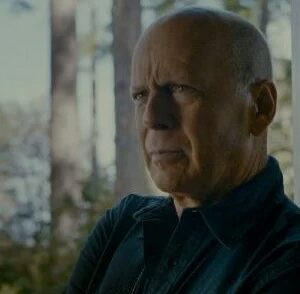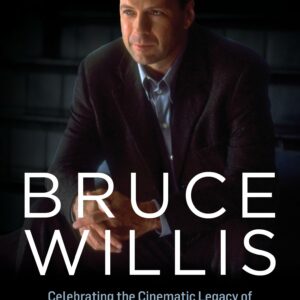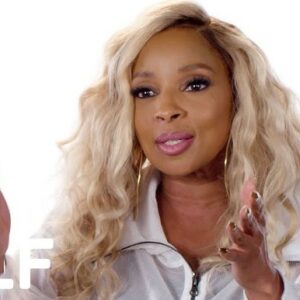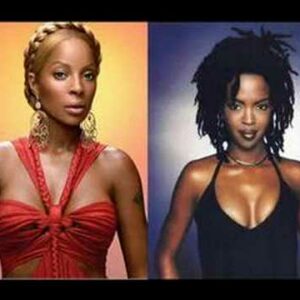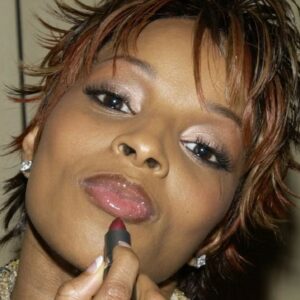In the landscape of R&B and hip-hop, few artists carry the gravitas and timeless influence of Mary J. Blige. With a career that spans over three decades, Blige isn’t just a singer—she’s an architect of the genre, someone whose voice became the soundtrack to heartbreak, resilience, and triumph. When we talk about Blige’s influence, it’s impossible to ignore how she paved the way for future generations of female artists in hip-hop, while simultaneously holding space for herself in the male-dominated world of urban music.
Blige’s rise to fame in the early 1990s redefined what it meant to be a female artist in R&B. Her gritty vocals were steeped in emotion, telling stories of love, loss, and redemption. But she wasn’t content with simply singing about pain—she embodied it, channeling her personal struggles into a career that resonated with listeners in a way that few artists could match. Hits like “Real Love”, “No More Drama”, and “Be Without You” positioned her as a raw, unfiltered voice for women who, like her, had loved too hard and hurt too deeply. Blige’s music is a testimony to survival, and through her authenticity, she became a legend.
Inside the Studio
Walking into one of Mary J. Blige’s studio sessions is like entering a sanctuary of sound. The walls are draped with velvet curtains, the lighting soft and ambient, almost designed to set the mood for the creative process that happens within. Candles are often lit, their subtle aroma filling the air, providing a sense of calm before the storm of artistic intensity that ensues. It’s not just a room filled with recording equipment—it’s a space designed for introspection, for channeling emotion into art.
Her studio is also a reflection of her own journey—filled with nods to the greats who influenced her. There are framed portraits of soul legends like Aretha Franklin and Marvin Gaye hanging on the walls, silently watching over her sessions. Yet, there’s also a strong current of innovation running through the room. You might see Blige lounging on a plush couch, deep in conversation with a producer about a new sound they’re trying to capture, while engineers make subtle adjustments at the console. The environment fosters creativity, pushing boundaries while staying grounded in tradition.
For Blige, the studio isn’t just a place to lay down vocals. It’s where she enters a state of flow, where ideas come to life. Whether she’s freestyling over a new beat or working on intricate harmonies with her backup singers, the energy is electric. It’s an environment that demands innovation but is rooted in soul, much like Blige herself.
Collaboration with Producers and Engineers
Mary J. Blige’s success has always been, in part, due to her ability to collaborate with some of the most talented producers and engineers in the business. From the start, her partnership with Sean “Diddy” Combs during the making of What’s the 411? was a defining moment not only for her career but also for the trajectory of hip-hop and R&B. Diddy’s ear for sampling and blending genres was the perfect match for Blige’s raw vocal delivery. Together, they helped carve out the “hip-hop soul” genre, a fusion that gave rise to some of the most defining sounds of the ’90s.
Blige’s collaborations have always been about more than just finding the right producer—they’re about chemistry. Take her long-time work with producers like Rodney “Darkchild” Jerkins or Jimmy Jam and Terry Lewis. With Jerkins, she found a sound that was both cutting-edge and deeply emotional, a combination that birthed iconic tracks like “Enough Cryin'” and “Take Me as I Am.” With Jam and Lewis, Blige honed her ability to marry smooth production with gritty, heartfelt lyrics, as heard in “Not Gon’ Cry.”
But it’s not just the producers—Blige has an equally close relationship with her engineers. These behind-the-scenes magicians help fine-tune every track to perfection. In her sessions, she’s known to sit side-by-side with engineers, adjusting EQ levels or debating the placement of reverb on her vocals. It’s this level of hands-on involvement that sets her apart. Her studio sessions are collaborative endeavors where every note, every beat, is discussed and shaped into the final product. She is never a passive participant in the process.
Crafting Her Unique Sound
When it comes to crafting her signature sound, Mary J. Blige’s process is meticulous. She has a keen ear for detail and a vision for how she wants each song to resonate with her audience. Whether she’s writing about personal pain or crafting an empowering anthem, Blige is deeply involved in every aspect of the production.
Her approach to songwriting is deeply personal. She’s been known to write songs in the dead of night, when the emotions are still raw and unfiltered. She’ll bring those lyrics into the studio and start molding them into something sonically powerful. Her involvement doesn’t stop at the words on the page—Blige has a natural instinct for how her voice should sit in the mix, how it interacts with the instrumentation around it.
In terms of vocal arrangements, Blige is precise. Her raspy, soulful voice is her trademark, but she’s constantly pushing herself to explore new vocal textures. She might spend hours perfecting a single harmony or working through a complex arrangement, ensuring that every note serves the larger emotional landscape of the song. She’s not afraid to experiment, either—whether it’s layering her vocals in unexpected ways or using her voice as an instrument in its own right, Blige is always searching for new ways to push her sound forward.
Her involvement in instrumentation choices is equally meticulous. Blige understands how different elements—whether it’s a guitar riff, a bassline, or a simple piano melody—can evoke certain emotions. In the studio, she’ll often work with musicians to shape the sound until it fits the emotional core of the track. This level of detail ensures that every song feels like an extension of her, a true representation of her artistry.
The Evolution of Mary J. Blige’s Music
Over the years, Blige’s music has continued to evolve, reflecting both the changes in her personal life and the broader shifts in the music industry. Her early work was defined by the raw vulnerability of tracks like “My Life”, where she openly grappled with pain and heartbreak. But as she grew, so did her music. By the time she released The Breakthrough in 2005, Blige had not only matured as an artist but also as a person, and her music reflected that growth. Songs like “Be Without You” showcased a new level of emotional depth and sonic complexity.
One of the hallmarks of Blige’s career is her ability to blend genres. She has seamlessly woven together elements of R&B, hip-hop, soul, and even rock over the years, creating a sound that is uniquely her own. This genre-blending is part of what has kept her relevant in an ever-changing industry. She’s never been afraid to experiment with new sounds or collaborate with artists outside of her genre—whether it’s her work with U2 on “One”, or her more recent collaborations with modern hip-hop artists like Kendrick Lamar.
Blige’s evolution as an artist also mirrors the evolution of the industry itself. As the lines between genres have blurred, so too has Blige’s music. She’s stayed ahead of the curve by continuously pushing herself to innovate, ensuring that her sound remains fresh while still maintaining the authenticity that has always been at the core of her artistry.
Final Touches and Polishing Tracks
As Blige and her team move into the final stages of perfecting a track, the energy in the studio shifts. This is where the magic happens—where all the pieces come together. The tracks are sent for mastering, a process that can make or break a song. Here, Blige is just as involved as she was in the earlier stages. She listens to multiple versions of the track, comparing subtle differences in sound quality, and isn’t afraid to send it back for tweaks if it’s not exactly right.
The feedback process is rigorous. Blige trusts her team but also relies on her own instincts. If a bassline feels too heavy or a vocal effect isn’t hitting the right emotional note, she’s the first to call it out. And when the final version is done, it’s not just a song—it’s an experience, crafted with care and attention to detail, reflecting every step of the journey from inception to completion.
In the end, what makes Mary J. Blige’s music stand out is not just her voice or her lyrics—it’s the painstaking care that goes into every track. It’s a commitment to excellence, a drive to push the boundaries of what’s possible in music, and a deep love for the art that keeps her evolving, innovating, and leading the way. And that, perhaps, is Blige’s greatest legacy—the ability to continually transform, while staying true to herself and her sound.
